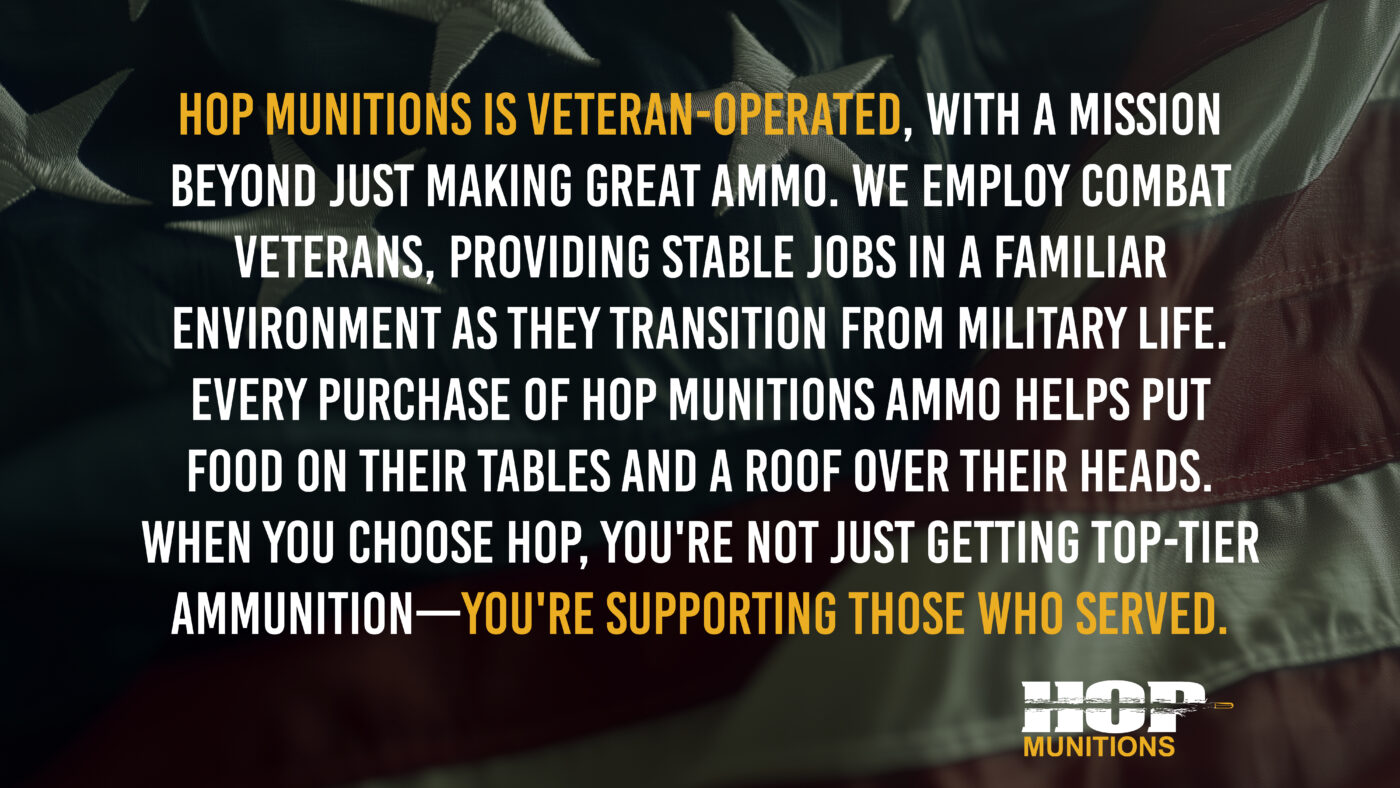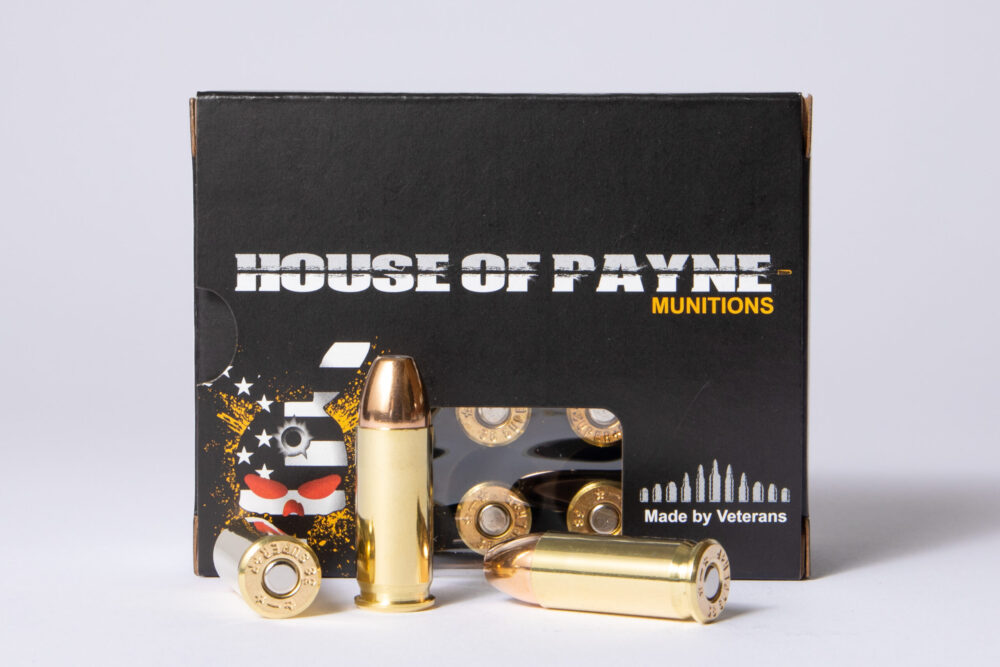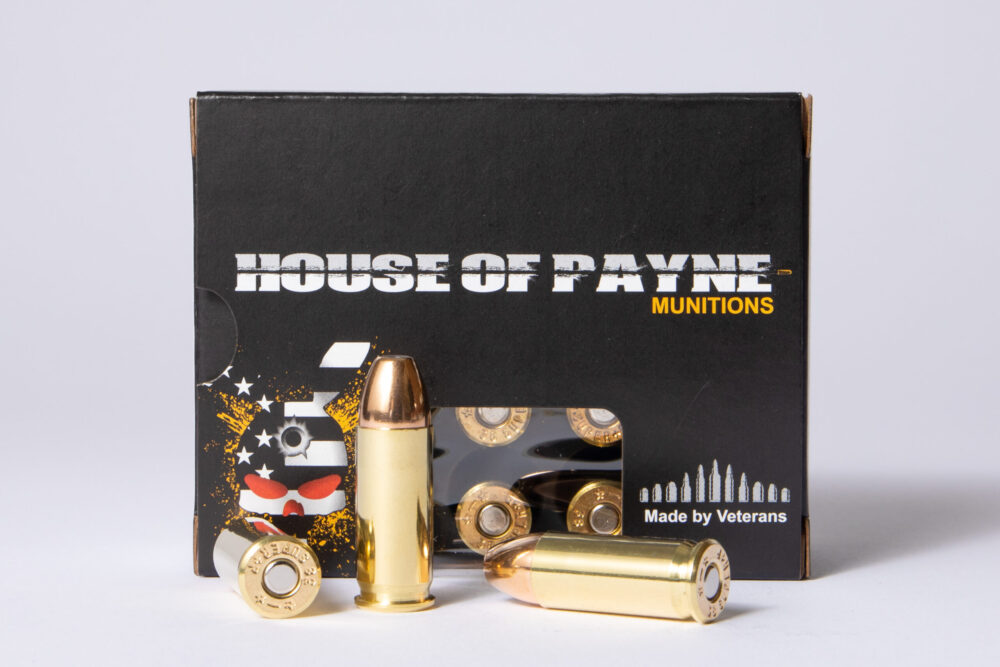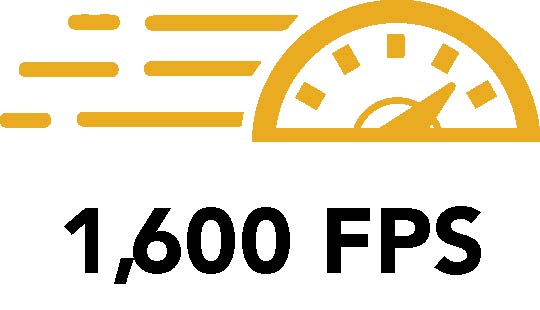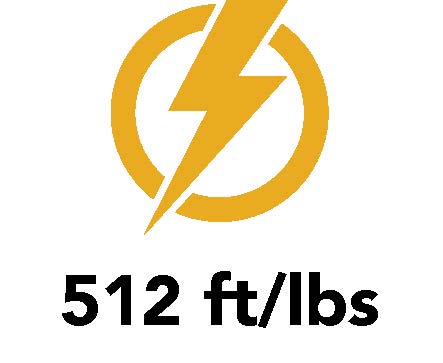HOP Blog
.38 Super vs 9mm: Why Some Shooters Still Choose the Underdog
A Classic Debate With Modern Relevance
Ask a room full of concealed carriers, home defenders, or competition shooters what caliber they trust most, and you’ll probably hear “9mm” a dozen different ways.
And it makes sense—it’s affordable, available everywhere, easy to shoot, and the modern 9mm hollow point is no joke. But for a select group of shooters, another cartridge has earned its place in the conversation: the .38 Super.
It’s the caliber that refuses to die. Developed nearly a century ago to punch through barriers that stopped early .45 ACP rounds, the .38 Super was once the FBI’s go-to. Today, it’s a favorite in competition circles and among shooters who want high velocity, flat shooting, and serious power—all in a 1911 package.
So, why would someone choose the .38 Super over the 9mm for self-defense? And more importantly: is .38 Super good for self-defense?
Let’s break it down.
History & Origins: How Two Legends Were Born
9mm Luger: Global Standard Since 1902
The 9x19mm Parabellum—better known as the 9mm Luger—was introduced by Georg Luger in 1902 for the German military. Its compact size, moderate recoil, and good terminal performance made it an instant hit. Over the next century, it became the world’s most popular handgun cartridge, adopted by NATO and used by law enforcement agencies across the globe.
Today, the 9mm is the default choice for everyone from first-time gun owners to elite military units. It’s the standard—and for good reason.
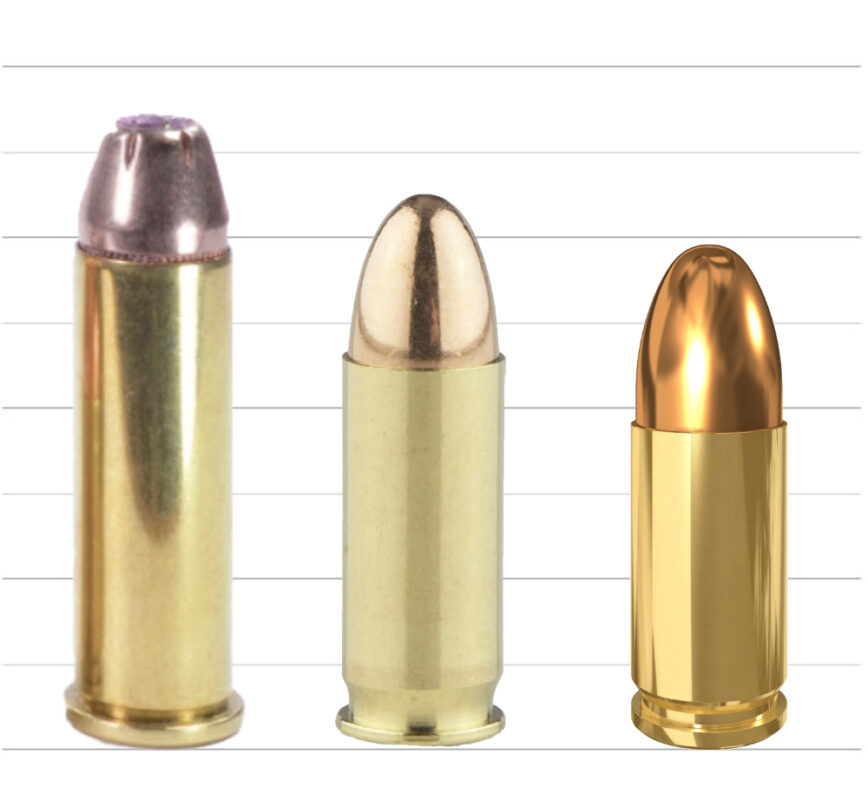
.38 Super: Born To Penetrate
The .38 Super came to life in 1929 as a hot-rodded version of the older .38 ACP. It was created specifically to defeat early body armor and car doors—things that the .45 ACP was struggling with in the days of Prohibition-era gangsters and Thompson-wielding G-men.
Chambered in the iconic 1911 pistol, the .38 Super delivered blistering velocity (often exceeding 1,300–1,400 fps) and impressive barrier penetration. While it never saw the same widespread adoption as the 9mm, it found a loyal following, especially in Latin America and in competitive shooting sports.
Ballistics Breakdown: .38 Super vs 9mm (Real Data from HOP Munitions)
There’s theory, and then there’s real-world performance. At HOP Munitions, we don’t just quote specs—we manufacture ammo that hits hard, flies fast, and performs when it counts. Here’s a head-to-head comparison of our top-performing loads in 9mm and .38 Super:
| Caliber | Bullet Weight | Muzzle Velocity | Muzzle Energy |
| 9mm +P | 147gr JHP | 1,000 fps | 326 ft/lbs |
| .38 Super +P | 124gr JHP | 1,350 fps | 465 ft/lbs |
| .38 Super +P | 90gr JHP | 1,600 fps | 512 ft/lbs |
What These Numbers Mean
- .38 Super Outpaces 9mm in Every Metric: Whether you’re looking at speed or stopping power, both HOP .38 Super loads hit significantly harder and faster than our 9mm offering.
- Flat Shooting, Fast Impact: That 90-grain JHP moving at 1,600 fps isn’t just a number—it’s a laser beam that flies flat and delivers immediate disruption on target.
- More Energy on Target: Even the heavier 124-grain .38 Super load carries 40% more energy than our 147-grain 9mm.
This kind of performance translates into better barrier penetration, greater tissue disruption, and increased effectiveness, particularly when shot placement is solid (as it should be).
Pro Tip: If you’re running a steel-frame 1911 chambered in .38 Super, you’ll not only get these performance benefits—you’ll also feel less snap and better recoil control than a similar polymer-framed 9mm.
Recoil, Control, and Shootability
On paper, the .38 Super looks like a hot rod—and to be fair, it kind of is. But that doesn’t mean it’s hard to control. In fact, depending on the platform, many shooters find it surprisingly soft to shoot, especially compared to snappier 9mm loads in lightweight polymer pistols.
Platform Matters
- .38 Super: Most commonly chambered in all-steel, full-size 1911 pistols. That extra weight soaks up recoil, turning even high-pressure +P loads into a smooth push rather than a sharp snap.
- 9mm: While you can find 9mm in full-size pistols, it’s often paired with lightweight carry guns—subcompacts, micros, or striker-fired polymers. The result? A snappier feel and more muzzle flip, especially with +P loads.
Faster Follow-Up Shots?
Here’s where things get interesting. Even though the .38 Super has more energy, the way that energy is delivered can make it easier to manage in the right gun. In a tuned 1911 with a well-balanced spring and comp, follow-up shots are lightning fast. That’s why it dominates in open-class competition.
Meanwhile, 9mm in a subcompact can jump quite a bit—slowing down your ability to get back on target for accurate follow-ups.
Bottom line: If you’re running a quality .38 Super pistol, especially something with a compensator or tuned slide, recoil is incredibly manageable. And when you factor in the extra velocity and energy, it’s a compelling case for self-defense.
Capacity, Concealment, and Gun Availability
When it comes to daily carry, firepower is only part of the equation. How many rounds can you carry? How easy is the gun to conceal? And can you even find a pistol in the caliber you want?
Capacity: 9mm Wins This Round
Let’s call it like it is—9mm dominates in magazine capacity. Modern double-stack pistols like the Glock 19, SIG P365, or Springfield Hellcat can carry 12–17+ rounds in a flush-fit mag. Add an extended mag, and you’re pushing 20+ rounds in a concealable package.
Compare that to most .38 Super pistols, which are typically 1911-based and run single-stack 9- or 10-round mags (though some race guns or custom builds push higher). If you’re used to carrying double-stack 9mm, you’ll notice the difference.
Concealment: Depends on the Gun
- 9mm: Available in every size under the sun—from full-size duty pistols to tiny pocket rockets. It’s the most flexible caliber on the market.
- .38 Super: Almost exclusively found in full-size or Commander-sized 1911s. That means a thinner profile but longer slide and heavier weight, not ideal for appendix carry or shorts-and-a-tee weather.
That said, some shooters prefer the weight and profile of a 1911—it distributes recoil better and can be extremely comfortable in an IWB holster with the right setup.
Gun Availability: Limited but Legendary
Here’s where 9mm takes another clear win. Every major manufacturer has dozens of models chambered in 9mm. You can find parts, mags, holsters, and aftermarket support everywhere.
.38 Super? It’s niche. You’ll mainly find it in:
- 1911 platforms from Colt, Dan Wesson, Rock Island Armory, Nighthawk, and STI/Staccato
- Competition pistols in Open Division (compensated, optic-ready, tuned for speed)
- A few custom or limited-edition imports
If you’re looking to carry .38 Super, expect to invest in a quality gun and possibly some custom holster work. But for some shooters, that’s part of the appeal—it’s not what everyone else is carrying.
Is .38 Super Good for Self Defense?
Short answer: Yes—if you know what you’re doing and pair it with the right platform.
Let’s break it down.
Terminal Ballistics That Matter
The HOP Munitions .38 Super +P loads (like our 90-grain JHP screaming at 1,600 fps) bring serious velocity and energy to the table. That translates to excellent penetration, fast expansion, and a flatter trajectory compared to 9mm—all critical factors in a defensive scenario.
- Faster velocity = quicker energy transfer and more violent expansion with a properly constructed hollow point.
- More energy = greater stopping power, especially if shots must pass through barriers like auto glass or heavy clothing.
- Flatter trajectory means more margin for error if your sight alignment or range estimation is slightly off under stress.
Overpenetration Concerns?
This issue arises frequently with high-velocity loads. It’s a valid concern, but it depends heavily on the bullet design. HOP Munitions’ JHP loads are tuned to expand rapidly and reduce the risk of overpenetration, even at elevated speeds.
Accountability matters. Regardless of caliber, every round fired in a defensive situation must be a hit that you can own. Shot placement is king, and accurate follow-ups are crucial. With the right pistol and training, .38 Super gives you the control and punch to make every shot count.
Barrier Penetration: A Quiet Advantage
If you’re in law enforcement, a private citizen who travels, or live in a state where vehicle defense is a consideration, .38 Super gives you a bit more punch through windshields, auto glass, and sheet metal than standard 9mm. It was literally built for that role in the early 20th century.
That said, most self-defense encounters happen at close range and don’t involve shooting through barriers. But if that edge gives you added confidence, it’s worth considering.
Reliability in 1911s
.38 Super is a semi-rimmed cartridge, and older or poorly tuned 1911s can be finicky about feeding. That said, modern manufacturers (and custom shops) have largely addressed these issues with the use of ramped barrels and improved magazines.
Carry a quality .38 Super pistol from a trusted brand, and reliability won’t be a problem.
Bottom Line: If you’re willing to step outside the 9mm echo chamber, the .38 Super offers excellent self-defense performance, especially in a full-size steel gun that tames recoil and maximizes control. It hits harder, flies faster, and offers a ballistic edge that some shooters simply prefer.
Competition & Specialty Use Cases
If you’ve ever stepped onto a USPSA or IPSC range, chances are you’ve seen someone blazing through a stage with a compensated 2011 running .38 Super. And there’s a reason for that: in Open Division, .38 Super is king.
Why Competition Shooters Love It
Major Power Factor with Manageable Recoil
In USPSA and IPSC, power factor is a scoring metric that rewards rounds with more momentum. It’s calculated by multiplying bullet weight (in grains) by muzzle velocity (fps), then dividing by 1,000. To qualify for Major Power Factor, the result must typically exceed 165. Our HOP Munitions 124-grain .38 Super +P JHP, with a muzzle velocity of 1,350 fps, clocks in at a power factor of 167.4—comfortably in Major territory.
What’s the benefit? Shooters earn more points for peripheral hits (like a “C” zone hit instead of an “A”), giving them more room for aggressive shooting while still scoring high. And unlike larger Major calibers like .45 ACP or .40 S&W, .38 Super keeps recoil tame—especially in a compensated race gun.
Flat, Accurate, and Fast
The ballistic profile of .38 Super delivers tight groups, minimal trajectory arc, and predictable performance at speed. It’s tailor-made for dynamic shooting sports where every tenth of a second counts.
Reloaders Love It Too
For reloaders, .38 Super is a dream cartridge. With its wide pressure window and flexibility in load development, it’s easy to fine-tune a load for your exact platform, whether for carry, training, or competition.
And because it operates at higher pressures, .38 Super brass tends to hold up well to repeated loadings when properly sized and maintained.
Practical Considerations: What You Need to Know Before Choosing .38 Super
Let’s get real for a minute. The .38 Super might bring the heat on paper and on the range, but carrying it or training with it comes with a few trade-offs. If you’re weighing it against 9mm for self-defense or daily carry, here’s what to think about:
Availability Matters
Walk into any gun store in America, and you’ll find boxes of 9mm on the shelf—often at bulk prices. .38 Super? Not so much.
- 9mm: Ubiquitous, cheap, and available in every flavor—from budget FMJs to bonded JHPs.
- .38 Super: Harder to find in big-box stores. Mostly stocked online or at specialty shops. And it’s not something you’ll typically find at your local range counter.
That said, if you buy smart and stock up when you can (or reload), this isn’t a dealbreaker.
Cost of Shooting
There’s no sugarcoating this: .38 Super is more expensive to shoot than 9mm.
- Practice ammo: Expect to pay more per round unless you reload.
- JHPs: Defensive ammo in .38 Super is a specialty territory—high quality, but premium-priced.
If you’re serious about carrying it, you need to train with it. And if you’re training with it, you need to budget for that extra cost, or load your own.
Carry Gun Options Are Limited
As we mentioned earlier, most .38 Super pistols are 1911-pattern guns. That’s great for control, but it does mean:
- Fewer holster options
- Heavier overall weight
- Lower capacity vs. modern micro-compacts
For some shooters, that’s a trade-off worth making. For others, it’s a dealbreaker.
Reliability Comes Down to Quality
Modern .38 Super guns from quality brands (Colt, STI/Staccato, Dan Wesson, etc.) are solid. But buying used, off-brand, or budget models can get dicey if they’re not properly tuned, especially when feeding semi-rimmed cartridges like .38 Super.
If you’re trusting it with your life, don’t skimp. Stick with well-supported pistols, and test your carry ammo thoroughly.
Bottom Line:
The .38 Super isn’t for everyone, and that’s okay. It’s a high-performance option for the shooter who wants something different, powerful, and proven. If you’re willing to commit to a platform, source your ammo smartly, and put in the training, the .38 Super has a lot to offer.
Final Verdict: Should You Carry .38 Super?
If you’re after a high-pressure, high-performance cartridge that shoots flat, hits hard, and delivers outstanding controllability in the right platform, the .38 Super deserves your attention.
Is it as convenient as 9mm? No.
Is it as affordable or widely supported? Also no.
But is it ballistically superior in many cases? Absolutely.
So Who Is the .38 Super For?
- Shooters who appreciate the 1911 platform and don’t mind carrying a slightly larger pistol
- Reloaders or enthusiasts who want to explore a proven but underutilized caliber
- Competitive shooters looking to dominate in Open Division with fast, accurate fire
- Self-defense carriers who prioritize flat trajectory, high velocity, and barrier penetration—especially when every shot must count
Why It Still Matters
The .38 Super isn’t just some forgotten caliber from the gangster era. It’s a living, breathing example of ballistic innovation that still holds its own—and often outperforms—modern defensive rounds in the right hands. When loaded properly (like our HOP Munitions +P JHPs), it becomes a true force multiplier.
The truth is: If you shoot well and place your shots, both 9mm and .38 Super can stop the threat. But if you want every possible edge—and you’re willing to train for it—.38 Super gives you more.
At HOP Munitions, we load our .38 Super +P JHP and 9mm JHP with accuracy, consistency, and real-world performance in mind. Whether you’re building a carry gun, training on the range, or gearing up for competition, our ammo gives you the reliability and ballistic advantage you need to stay sharp and stay ready.
